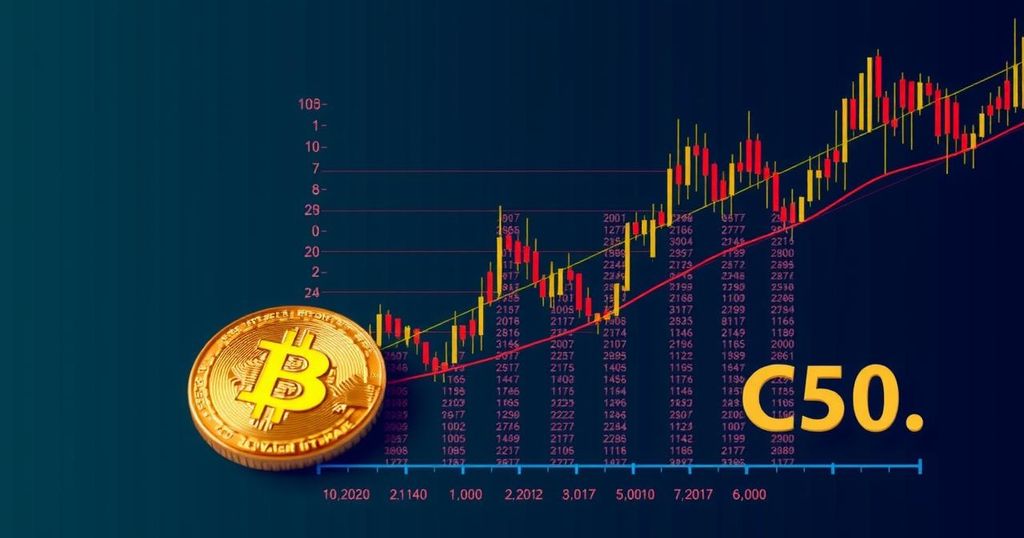Impact of CPI Announcements on Bitcoin Pricing Dynamics
The impact of CPI announcements on Bitcoin’s price reveals volatility that does not consistently align with reported inflation rates. Historical data suggests that broader factors, including Federal Reserve interest rate policies and Bitcoin’s fixed supply, have a more substantial influence on price movements. Despite expectations that Bitcoin prices rise or fall in response to inflation reports, the actual dynamics are more intricate, highlighting Bitcoin’s role as both an asset for speculation and a hedge against currency devaluation.
Bitcoin, introduced in 2009 after the Great Financial Crisis, has faced minimal macroeconomic challenges compared to gold, which possesses a long history spanning various political climates. While gold’s supply can fluctuate with new discoveries, Bitcoin maintains a fixed supply capped at 21 million, raising questions about its effectiveness as an inflation hedge compared to gold. CPI (Consumer Price Index) reports influence Bitcoin prices, but the correlation is not straightforward. Price movements of Bitcoin on the day following CPI announcements show volatility regardless of the reported inflation rate. For example, Bitcoin’s price decreased by 11% when CPI figures fell from 8.5% to 8.3% in April 2022, yet it rose by 9.68% when inflation diminished from 8.2% to 7.7% in October 2022. These trends indicate that Bitcoin’s price reacts to CPI announcements in inconsistent ways. The onset of the Federal Reserve’s interest rate hikes in March 2022 resulted in a more significant impact on Bitcoin prices than CPI figures themselves. As borrowing costs rose, the perception of Bitcoin as a hedge against inflation increased. Data shows that as CPI figures declined, Bitcoin prices generally ascended. This suggests that while Bitcoin is viewed as an asset for speculation and a hedge against currency devaluation, actual Federal Reserve policies exert a more dominant influence over its price. Moreover, in times of economic uncertainty, such as the banking crisis in the United States, Bitcoin has emerged as a safer investment, highlighting its role as a hedge against central banking practices. CPI reports are fundamentally connected to central bank policies, especially the Federal Reserve’s approach to monetizing government debt, which ultimately leads to currency devaluation. Despite expectations that Bitcoin prices will react positively to CPI fluctuations, historical data illustrates differing outcomes. In summary, while CPI announcements are anticipated to influence Bitcoin’s price movements, the effects are often obscured by the broader economic implications of central banking policies and the fixed supply dynamics of Bitcoin itself. Even in a market where CPI figures trend downward, the inherent inflationary pressures on fiat currency and Bitcoin’s lower future inflation rate as it approaches a new halving in 2028 suggest a potentially more favorable outlook for Bitcoin in the long run.
Bitcoin was developed in the aftermath of the Great Financial Crisis, a period that drastically shifted perceptions of monetary policy and financial stability. With a limited total supply and decentralized nature, Bitcoin has positioned itself as a potential alternative to traditional asset classes such as gold, which, for centuries, has been regarded as a safe haven. The advent of CPI reports serves as a crucial metric for assessing inflation trends in the economy, while the Federal Reserve’s monetary policies significantly influence both inflation and the attractiveness of Bitcoin as an investment. Understanding these dynamics is essential for comprehending Bitcoin’s performance in reaction to macroeconomic indicators like CPI announcements.
In conclusion, the relationship between CPI announcements and Bitcoin price fluctuations is complex. Although CPI reports are influential, the fundamental economic variables, particularly those relating to Federal Reserve policies and Bitcoin’s scarcity, play a more critical role in determining price movements. As evidenced by historical trends, Bitcoin responded variably to CPI figures, suggesting its price is more profoundly affected by broader economic contexts rather than by inflation reports alone. This understanding reinforces the notion that Bitcoin serves not only as a speculative asset but also a potential hedge against centralized financial practices.
Original Source: www.coingecko.com








Post Comment